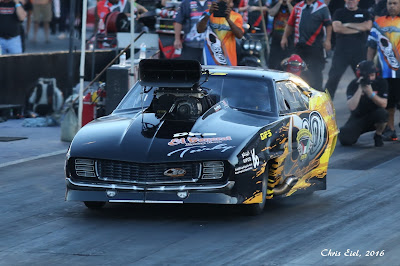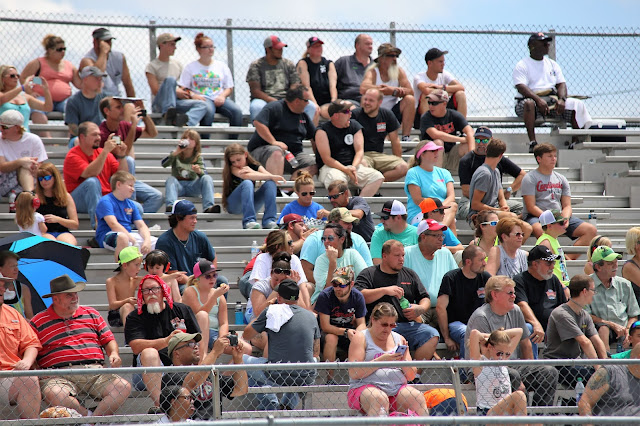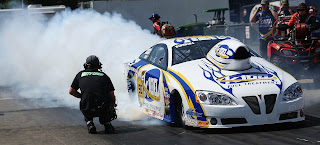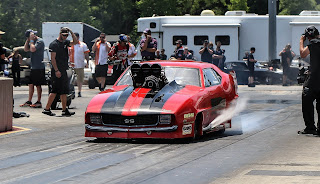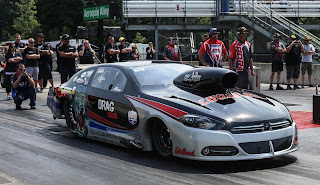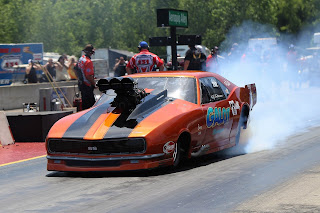The Professional Drag Racers Association (PDRA) is holding its final meet of 2016 at Virginia Motors ports Park this weekend. Sure wish I was there since several of my photog buddies (Joe and Dave) are there now: Joe shooting live video feed for Door Slammers Plus and Dave with his trusty tripod. Well, I'll get my fix November 4-5 in Saint Louis at Gateway Motorsports Park when the American Drag Racing League (ADRL) makes it's comeback. That's another story and I won't bore you with the details. So, look for some new drag shots in a few days and HAPPY HALLOWEEN. It'll be a big day for me because I will be 70 this holiday ... gosh, where has the time gone? Bye for now.
Thursday, October 20, 2016
Friday, October 14, 2016
Yesterday I was in Weeping Water, Nebraska; a town of 1000+ located in Cass County. This building, now the public library, was originally built in 1885 as a Congregationalist Church and educational academy. Construction was of native limestone quarried nearby. The stone was peppered with iron fragments that "weep" rust when wet. The academy was closed before our involvement in World War I (1914) because the quality of the public schools improved.
 Due east of Lincoln, in Cass County, lies the village of Murdock. Surrounding Murdock are tens of thousands of acres of corn and soy beans. The beans are used mainly in meal or processed into oil; the corn is used almost exclusively as animal feed. In Eastern Nebraska the growing year has been good and, therefore, there are above average crop totals...and depressed prices per bushel. Here you can see the corn being stored in huge piles next to the grain elevators. That corn eventually will be sold and trucked to other elevators and co-ops. The day I took this photo was sunny and cool. Perfect weather for harvest. Meta data: Canon 6D. Sigma 20-70mm lens. Shot in manual setting: f/11. 1/125. ISO 100. Edited with Lightroom 5.7.
Due east of Lincoln, in Cass County, lies the village of Murdock. Surrounding Murdock are tens of thousands of acres of corn and soy beans. The beans are used mainly in meal or processed into oil; the corn is used almost exclusively as animal feed. In Eastern Nebraska the growing year has been good and, therefore, there are above average crop totals...and depressed prices per bushel. Here you can see the corn being stored in huge piles next to the grain elevators. That corn eventually will be sold and trucked to other elevators and co-ops. The day I took this photo was sunny and cool. Perfect weather for harvest. Meta data: Canon 6D. Sigma 20-70mm lens. Shot in manual setting: f/11. 1/125. ISO 100. Edited with Lightroom 5.7. Thursday, October 6, 2016
This valley (west of Cody, Wyoming) shows evidence that it was shaped by a glacier or glaciers. The valley is "u" shaped which indicates that the walls and floor of the valley were scraped and pushed into this shape by a huge glacial river of ice and rock. As the glaciers pushed down the valley, their weight and motion carved this valley into the shape you see here. When the glacier retreated, it left a moraine of pulverized rock and soil. There have been five major ice ages in the history of the earth and this glacier could have been born in the current epoch: the Quaternary Ice Age. This latest ice age started about 2.5 million years ago and has lasted until now.
The pine forests of the Rocky Mountain ecosystem are vast and varied. Besides deciduous trees (Aspens, oaks, sycamores) the forests are made up of hundreds of millions of Ponderosa, Lodge Pole, Scotch, and Limber pines. These pines are threatened by two major natural phenomena: fire and insects (the Mountain Pine Beetle, the Ash Borer, and other types of borers and insects). But the forests survive and prosper. Pictured above is a pine forest in the midst of a regrowth cycle following a fire. If you look closely you can see the new pine trees covering the hillside with ruminants of the old forest poking above the small, newer trees. Some pines re-germinate only after their seeds are touched by fire! Some pine seeds are spread by wind, birds, or wild animals. And...some forests are planted by humans for harvest at a later date.
Central Wyoming at the end of September is a beautiful and stormy place. Spent the day driving through rain and sleet until I reached the Nebraska border. It had snowed the night before but evidence of the storm was gone when I arrived at this off ramp northwest of Cheyenne. The clouds were scuttering along the horizon and the cool wind rustled the grass and the bales of hay. I had left Lander, Wyoming at 8:00 am Mountain Standard Time and would drive until I got home to Lincoln. All toll, the day's drive totaled about 800 miles and ended at 12:30 am the next day. I drove, stopped and photographed, had several meals (in my car and in restaurants), gassed up, and took about three cat naps in rest stops along I-80. I love to drive. It does something for my soul. It calms and centers me...it's been that way since I was a kid. Long drives, drives late at night, impromptu drives ... the hum of the tires and the whoosh of the wind make my life better. That's all I can say on that. That's all.
Tuesday, October 4, 2016
 |
| A jumble of camera equipment.... |
 |
| I'm happiest when I'm shooting. |
The picture to the left is of one of the four Little America Hotels owned by Robert Holding. This hotel is in Cheyenne and harks back to the 1960's in design and customer service. Holding, also owner of Sinclair Oil, died several years ago with an estimated worth of about $3 billion dollars. I might add that the hotel was a pleasure to visit and the restaurant was wonderful. Also nice...the hotel was immediately next to the I-80 on-ramp west to my destination.
At the top you can see a photo of me and one of my cameras taken on the bank of the Snake River immediately east of the Teton Mountains--seen in the background. As I drove around each day, I would dive in and out of my truck to grab cameras, tripods, lenses and filters. At the end of each day my trunk would look like a disorganized jumble of expensive junk. Pictured above are the contents of my Honda Civic's trunk the end of one of my photo safaris. I'd pack everything up, drive back to the hotel and begin to organize and edit.
OK, so I stop in Lander, Wyoming for the night at this place called the Maverick Motel. But the bill said it was the Frontier Motel...whatever. Attached to this motel is a small steak house. I'm tired so I decide to walk across the motel courtyard to the restaurant. The waitress is super nice and tells me that they have a prime rib special for Friday night. "Right-o," I say. "I'll have that medium rare with french fries." Then it arrives. Not one, but two plates of food! One for the steak and one for the fries and the corn. Don't forget the corn. Oh....and the au jus came in a small soup bowl. I finished about 25% of the meal and took the rest back to the room. Good lord. Haven't seen anything like this in all my life. They sure do eat in Wyoming.
To me, this is one of the iconic symbols of the western United States. The cattle guard. Where in Iowa and Nebraska, most livestock are fenced and most pastures are gated...livestock in Wyoming, Colorado and Montana (and other western states) are restrained by both barbed-wire fencing and cattle guards like this one. A simple grate that prevents cloven hoof animals from wandering off the rancher's range. Many interstate off-ramps end in a gravel road guarded by grates such as this one. Oh, and please do keep out. That's why I shoot lots of stuff with telephoto lenses. If you travel west, please honor the rancher's property lines...your respect to the land is appreciated.
The Grand Teton Range in West Central Wyoming, south of Yellowstone National Park. The Tetons lie to the north of Jackson, Wyoming. These mountains are quite stunning because of their composition and the fact that they have no foothills---they jut out of the earth in a very dramatic way. The reason for their appearance is that these peaks are pushed up by earthquakes that do two things: the mountains are thrust upward and the valley floor falls as a massive slab of stone and earth. The rock that composes the Tetons is extremely old (2-3 billion years!) and is mainly igneous: granite and gneiss. These lovely peaks are swaddled in millions of lodge pole pines and deciduous trees. Winding below these peaks is the Snake River. This photograph was taken early in the morning (about 7:30 am) with a Canon 6D and a Sigma 24-70mm lens set at 24mm. f/11; shutter set at 1/60. ISO on auto.
Saturday, August 27, 2016
Friday, August 19, 2016
Saturday, June 11, 2016
Subscribe to:
Comments (Atom)
